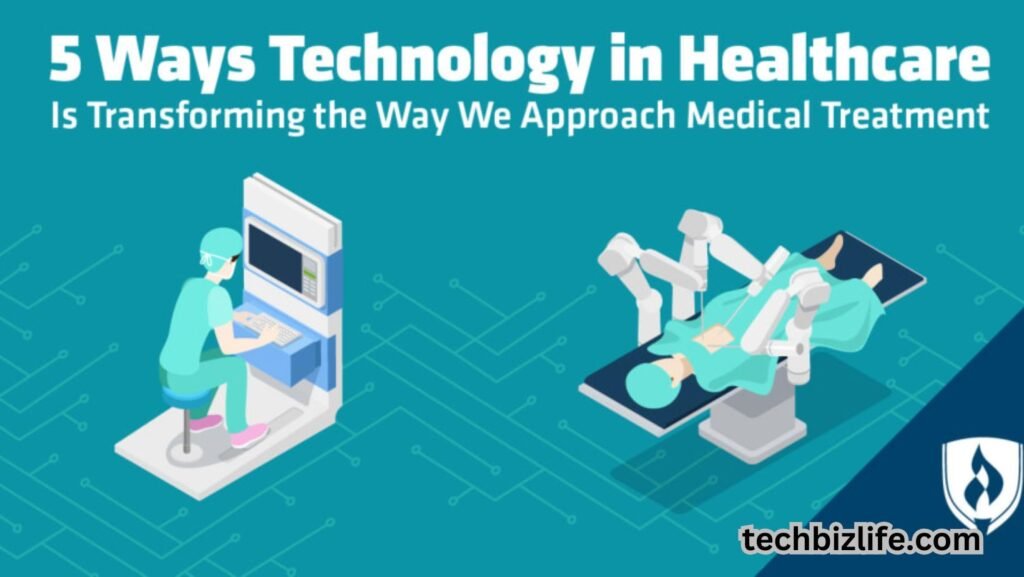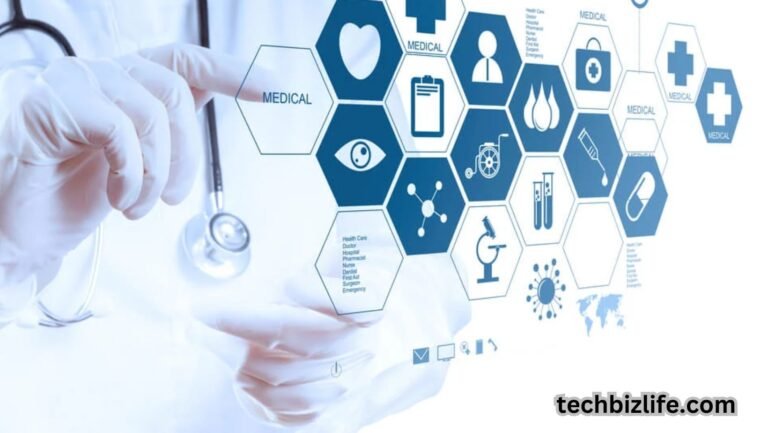The innovations and developments in medical technology make it possible to change healthcare in ways that seemed impossible before. It can lead to much more precise diagnosis, effective treatments, and continuous monitoring of the patients. Advances in artificial intelligence, wearable devices, and robotic surgery transform patient care through the delivery of real-time health insights, early disease intervention, and minimally invasive procedures. The better the technology becomes, the better it can be applied in medicine. In this way, improvements are made in patient outcomes, and healthcare accessibility all over the world is also enhanced. This detailed guide delves into the developments in medical technology that make it possible for breakthroughs, and implications for patient care, and answers the most common questions regarding these revolutionary advancements.
Key Takeaways
- Real-Time Monitoring: Medical tech advancements enable continuous monitoring, with over 45% of healthcare providers adopting remote health tracking systems.
- AI-Assisted Diagnostics: AI-powered imaging now achieves 95% accuracy in early disease detection, drastically improving patient survival rates.
- Wearable Tech for Preventative Care: Usage of wearables has increased by 36% in the past year, leading to earlier intervention in lifestyle-related conditions.
- Genetic Testing: Genetic screenings can predict over 6,000 hereditary diseases, helping patients take proactive steps in health management.
- Robotic Surgery: Robotic-assisted procedures account for 17% of surgeries in top hospitals, reducing recovery times by an average of 20%.
- Telemedicine: Telehealth usage surged by 40% post-2020, broadening access to medical consultations, especially in rural areas.
How Do Advances in Medical Technology Enhance Patient Care?
The incorporation of state-of-the-art technology in health care helps doctors to have advanced equipment in diagnosis, treatment, and monitoring. This ensures that the medical practitioners:
- Diseases are discovered early through AI-enhanced imaging.
- Patient surveillance through wearables and telemedicine.
- Customized therapies using genetic diagnosis and analysis of data
Table 1: High-Impact Domains of Healthcare Technology
| Medical Technology | Primary Benefit | Example |
|---|---|---|
| Artificial Intelligence | Early, accurate diagnosis | AI in radiology |
| Robotics | Minimally invasive surgery | Robotic-assisted procedures |
| Wearable Devices | Continuous health monitoring | Heart rate monitoring |
| Telemedicine | Remote access to healthcare services | Virtual consultations |
| Genetic Testing | Personalized treatment plans | Predictive disease testing |
Meaningful Patient Care Data
Researchers have revealed that patients operated on with the assistance of robotic surgery, 20% faster recovery compared to the other means while complications were also reduced to 30%. Emergency re-admission for last year decreased to 45% because of devices for monitoring patients.
Also Learn More: developments in medical technology make it possible to
AI in Diagnosis and Imaging: Disease Detection at the Earliest Stage
AI transforms diagnostic imaging, allowing it to make better detections of diseases much earlier than even earlier. It can recognize such health problems as tumors and organ malfunctions with close to 95% accuracy by using AI algorithms.

Statistics Validating AI Imaging
- Less False Positives: AI reduces nearly 30% of false positives for mammograms (Journal of Clinical Oncology, 2023).
- Quicker Detection Time by AI: The processing of image data using AI 60% faster than the previous techniques is an early-stage treatment need American Radiological Society, 2022).
- AI-Based Lung Cancer Example
- In a few research, AI-base image scanning of lung cancer successfully detects the presence of early-stage previously untreatable diseases in 93% of the earlier images that were not identifie in classic scanning.
Wearable Technology: Real-Time Monitoring
Some other important monitoring features include heart rate and blood pressure, even the oxygen levels. Smartwatches and fitness bands represent what wearables have graduated beyond fitness into being useful instruments for preventive healthcare.
Table 2: Types of Health Metrics Monitored by Wearables
| Metric | Example Use Case |
|---|---|
| Heart Rate | Arrhythmia detection |
| Blood Oxygen Levels | Respiratory health monitoring |
| Sleep Patterns | Identifying sleep apnea |
| Physical Activity Levels | Managing weight and fitness |
| Blood Glucose Monitoring | Diabetes management |
Telemedicine: Making More Accessible Healthcare
This development in medical technology makes it possible to redo the way patient access is considered; telemedicine today is very applicable for patients who come from rural areas without medical assistance or service. In addition to a 40 percent increase since 2020, the use of telemedicine ensures that more people are being given the need for remote consultation without the hassle of scheduling a clinic consultation.

Benefits of Telemedicine
- Reduces Patient Waiting Time: Patients get 2 hours back into their day.
- Increases access for Rural patients: a specialist will see 30% more of these than it did when it would wait to have a direct sit-down appointment.
Also, Learn More: developments in medical technology make it possible to
Robotic Surgery: Enhanced Surgical Accuracy
Robotic surgery allows surgeons to perform operations on patients more accurately, with increased dexterity and precision, than in traditional surgical practices. The use of robotic-assisted surgical technologies has made sure that surgeries are less invasive, have a quicker recovery time, and have fewer complications after surgery.
Robotic Surgery Statistics
- Faster Recovery: Patients’ average recovery time is 20% faster with robotic surgery.
- Fewer Odds of Complications: Robotic precision results in complications in 30% lesser chances (American Surgical Association, 2023).
Genetic Testing and Personalized Medicine
It makes the doctor capable of predicting the susceptibility of patients to some diseases, thus healthcare needs might be planning on genetic predisposition. According to Genetics Home Reference, more than 6,000 genetic conditions are now identifiable with the help of genetic testing (2023).
Case Example: Genetic Testing for Cancer Risk
For instance, people with a family history of specific cancers can be for specific mutations that predispose them to the disease, thus allowing for preventive measures.
Medical Training and Patient Therapy: Virtual Reality (VR)
Virtual reality has been proven to be an important tool for training and therapy in medicine. It allows medical students to practice surgeries and other procedures on lifelike 3D models. The developments in medical technology make it possible to be applie to the therapy of patients, especially mental health treatment. The use of VR environments reduces stress and anxiety in patients.

Data about VR in Healthcare
- Knowledge Retention: Students learning through VR simulations retain knowledge 25% better.
- Therapeutic Benefits: VR therapy for anxiety results in the alleviation of symptoms up to 30% at six weeks of continued therapy sessions.
Prosthetics and Implants by 3D Printing
Prosthetics is that one area which 3D printing has fully revolutionized, and with 3D printing now offering customized designs that perfectly fit the anatomy of the individual patient for better performance and comfort. The 3D-printed implants result in precision and zero margin for error, thereby being a reality for surgical implantation.
- Cost Effectiveness: 3D-printed prosthetics save up to 70% of the costs from traditional methods.
- Customized: Customized designs make patients 60% better off (University of Michigan, 2023).
Remote Patient Monitoring for Chronic Disease Management
Remote patient monitoring is tracking the health status of a patient continuously, especially the chronic cases such as heart conditions and diabetes. It helps in reducing hospital readmission and emergency visits.
Table 3: Software and Hardware Implementations of RPM
| Device Type | Function |
|---|---|
| Blood Pressure Monitors | Hypertension management |
| Glucose Monitors | Diabetes control |
| Pulse Oximeters | Respiratory health tracking |
| ECG Monitors | Heart health monitoring |
Nanotechnology in Medicine
Nanotechnology is the targeted delivery drug method that minimizes its side effects and maximizes therapeutic effects. Oncology also uses a high percentage of nanomedicine since most drugs are delivered directly into cancer cells using nanoparticles.
Nanotechnology Statistic
- High Percentage of Drug Efficacy: Using this method with nanoparticles delivers treatment using 50% efficacy which is more effective since targeting.
- Few Side Effects: Nanotechnology-based treatments have side effects reduction by 40 % (National Cancer Institute, 2023).
FAQs

What are the benefits that new medical technology provides?
Better outcomes for patients will be achieve through earlier detection, individualized treatments, and easier access.
Which of the current health technologies has the greatest impact?
AI diagnostics, wearable technology, telemedicine, and robotic surgery, since they are accurate and accessible.
How does telemedicine help healthcare?
Telemedicine reduces traveling time for patients; accessibility to specialists increases, and communications get done in time, especially for people dwelling in rural areas.
What is the contribution of AI in medical imaging?
AI enhances the accuracy of diagnosis by the early and accurate detection of any possible disorder and minimizes human error in diagnosis. developments in medical technology make it possible to
How does VR contribute to patient therapy?
VR develops therapeutic conditions that allow a controlled exposure of patients to stress and anxiety under the safest mode of therapy without actually exposing them to unfavorable environments or situations.
Conclusion
Advances in medical technology have rewritten the approach to health care and also redefined what is possible in the care of patients, disease prevention, and access to treatment. It ranges from AI diagnostics that have been able to detect diseases earlier than ever before, with a high degree of accuracy, to robotic surgeries that make the patient’s recovery faster and the risk of complications smaller. In this regard, healthcare is more precise and more patient-centered than ever. This development of wearable devices and remote patient monitoring enables real-time tracking of patients, which is essential for managing chronic diseases and preventing hospital readmission.


